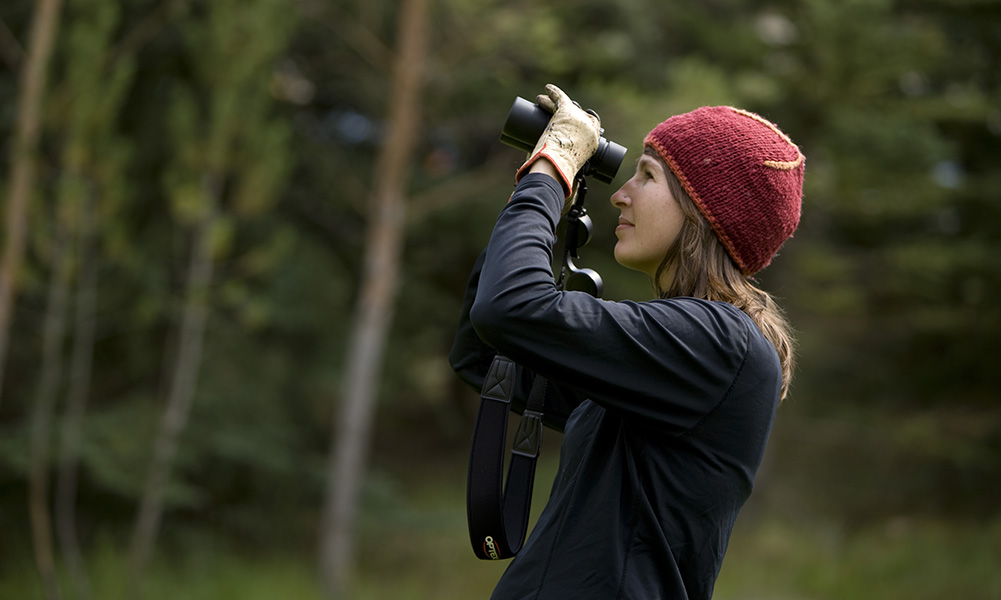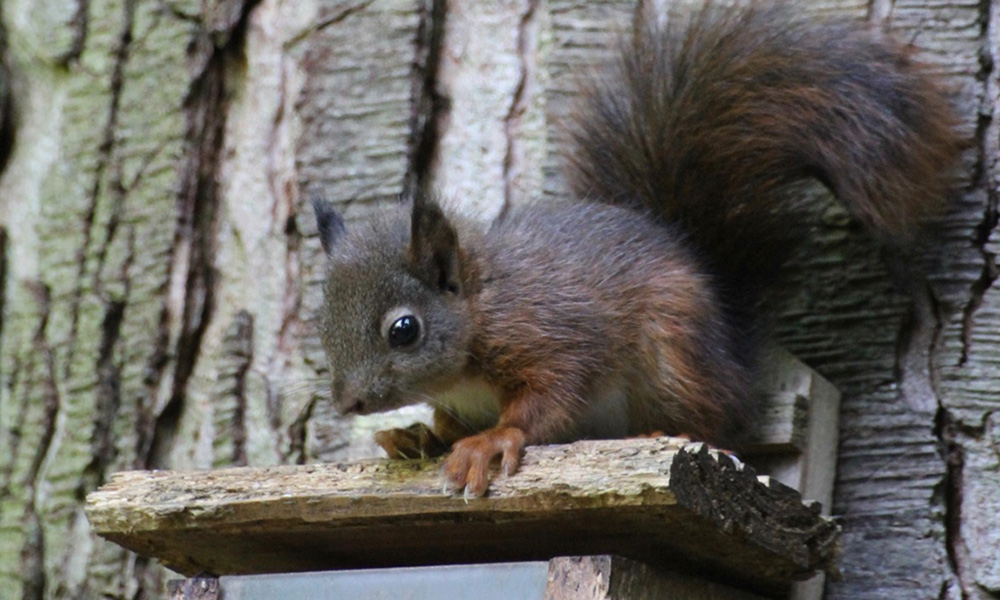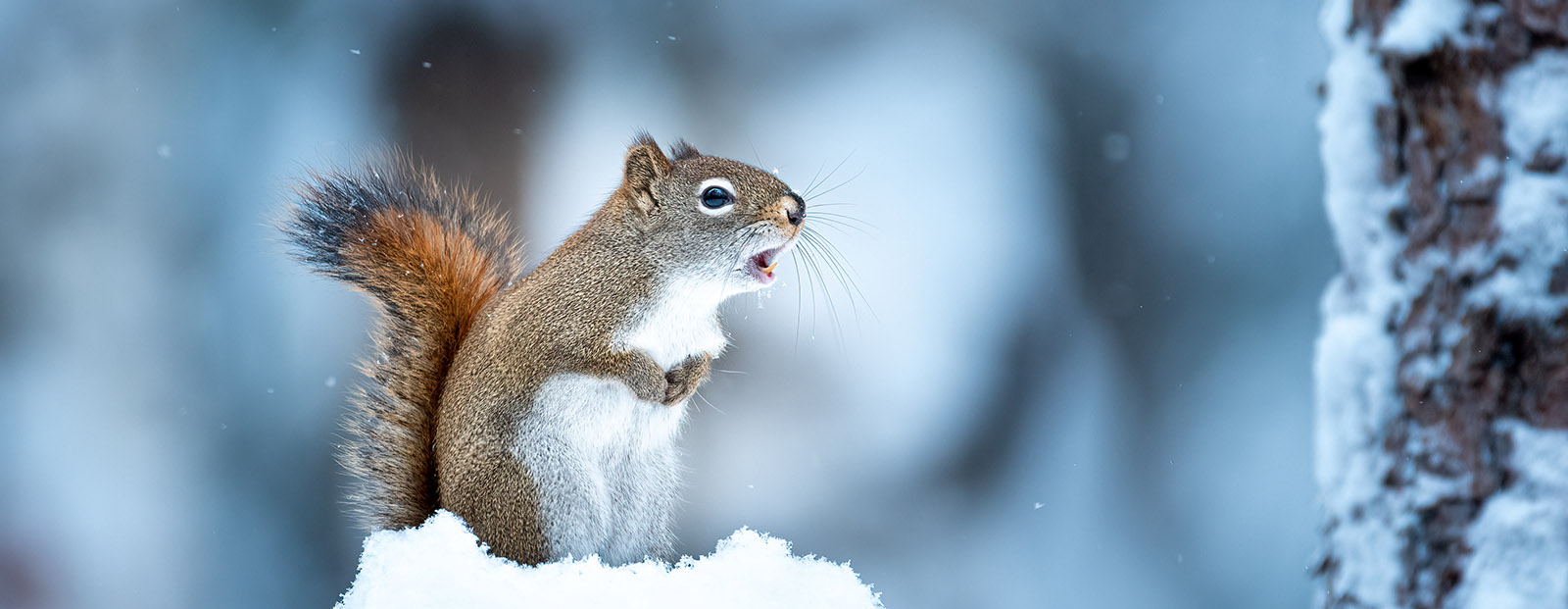If you live in a neighbourhood rich with conifers (cone-bearing trees), you’re probably familiar with the rattling and barking of North American red squirrels. But what are your furry little neighbours saying?
Dr. Shannon Digweed has spent more than two decades deciphering the meaning behind the vocalizations of these incredibly hardy rodents.
“Squirrels have a pretty tough life – they’re one of only a few small mammals that don't hibernate, and surviving the winter is hard work,” says the associate professor in the departments of psychology and biological sciences. “That’s why most of their communication relates to making sure that they have enough food to last them through the coldest months.”
 Dr. Digweed looks for squirrels in Whitemud Creek Ravine.
Dr. Digweed looks for squirrels in Whitemud Creek Ravine.
At green spaces in the city, including an area in Whitemud Creek Ravine, Dr. Digweed and student researchers in her Animal Communication and Cognition Lab record the range of sounds squirrels make, then conduct computer analyses to see what’s being said.
In the past, they’ve looked at how squirrels make and receive calls in response to a predator’s presence, but now the research team’s focus is territorial calls.
“Squirrels live alone in small areas and don’t really like to share, so they often communicate to tell other neighbouring squirrels to get out of their space or to warn them not to take their food,” explains Dr. Digweed.
Digweed’s research not only looks at what’s being communicated, but whether squirrels can tell who’s talking.
“They can potentially recognize each other’s voices,” she explains. “So now we’re in the process of trying to understand how they might respond to a squirrel call they don’t recognize.”
After recording different squirrel sounds, Dr. Digweed uses audio technology to see if there are components of the audio that a squirrel might use to distinguish between individuals.
In a squirrel’s world, that matters, she says, because food theft is a real issue (a late 1990s study found that up to 92 per cent of a squirrel’s food is stolen from their neighbours). That means unfamiliar sounds from potential thieves could pose a real threat.
Samantha Sydor, a fourth-year Bachelor of Science student, also works alongside Dr. Digweed to extend their research program beyond the city limits. Sydor is looking into whether there are differences between how urban and rural squirrels communicate.
Why spend time figuring out what all that squirrel chatter is about? “The sounds squirrels make and how they interpret those sounds offer a picture into how they understand and interact with their world,” says Dr. Digweed. “If we understand that, then potentially it can help us learn how to live together with them.”
A Eurasian red squirrel pup
Living in harmony with squirrels is worth doing, she says. Dr. Digweed also researches the North American red squirrel’s European cousin, the Eurasian red squirrel, which is endangered due to the loss of its woodland habitat and the introduction of the American grey squirrel. She hopes to return to Scotland this summer to complete research funded by a grant from MacEwan’s Office of Research Services.
